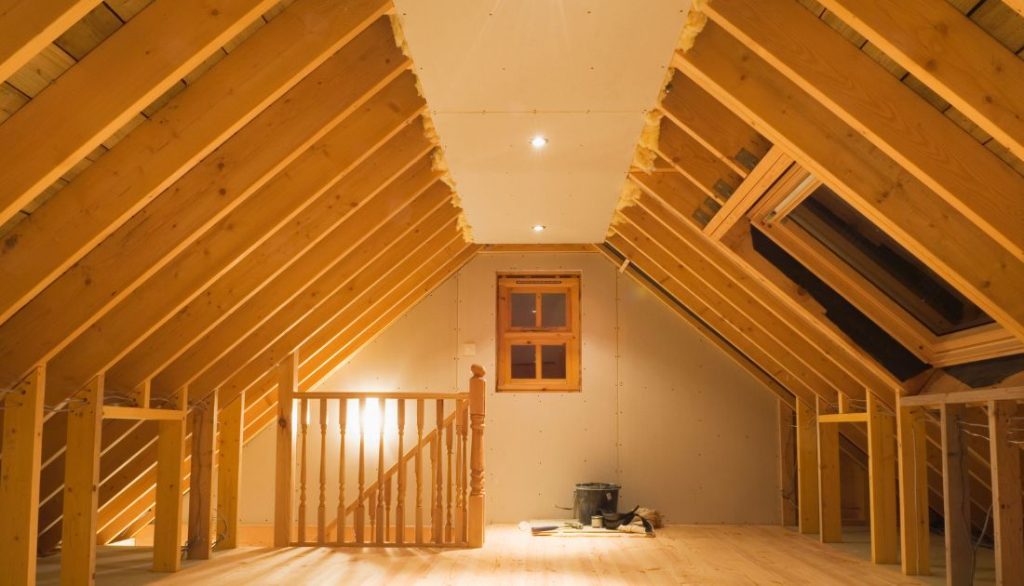Table of Contents
Attic fans can be a valuable addition to any home. They provide better ventilation and temperature regulation to help improve energy efficiency and indoor comfort. However, installing an attic fan can be daunting for many homeowners.
Before starting the installation process, it is crucial to choose the right attic fan for your space. Measure the square footage of your attic and select a fan with an appropriate airflow capacity to ensure optimal ventilation.
Factors such as insulation and existing roof vents should also be considered to determine the best location for installing the fan. Proper placement will maximize its efficiency and effectiveness in regulating the temperature inside your attic. Learn more about the installation of a fan in this article.
Understanding the Benefits of Attic Fans
Energy Efficiency: Attic fans help regulate the temperature in your attic, reducing the strain on your HVAC system and potentially lowering energy costs.
Moisture Control: Attic fans can prevent mold growth and prolong the life of insulation and roofing materials by removing excess moisture from your attic.
Improved Air Quality: Proper ventilation provided by attic fans helps to expel stale air and pollutants, promoting a healthier indoor environment for you and your family.
These benefits make installing an attic fan a practical investment for homeowners looking to improve their home’s energy efficiency, maintain structural integrity, and enhance overall comfort.
Selecting the Right Attic Fan for Your Home
When choosing an attic fan, consider the size of your attic space. A larger attic may require a more powerful fan to ventilate the area effectively. Additionally, consider whether you want a solar-powered or electric attic fan based on your energy efficiency preferences.
Next, evaluate your home’s ventilation needs. If your attic tends to trap heat and moisture, opt for a fan with a higher airflow capacity to ensure optimal air circulation. Choosing a fan with noise levels that are acceptable for your living environment is also important.
Lastly, look at reviews and ratings of different attic fans to learn about their performance and durability. Selecting a reputable brand with positive feedback can help ensure that you invest in a quality product that will efficiently ventilate your attic for years.

Preparing Your Attic for Installation
Clear Out Clutter: Before installing an attic fan, ensure your attic is free of clutter and debris. This will make it easier to navigate the space during installation and prevent any obstacles from interfering with the fan’s functionality.
Check for Proper Ventilation: Assess your attic’s ventilation system to determine if it meets the requirements for installation. Adequate ventilation is crucial for properly functioning an attic fan, so make necessary adjustments before installing.
Inspect Roof Condition: Examine your roof for any signs of damage or leaks that could affect the installation process or compromise the efficiency of the attic fan. Addressing these issues beforehand is important to ensure a successful installation.
Finding the Ideal Location for Your Attic Fan
When determining where to install your attic fan, consider the following factors:
Ventilation Needs: Identify areas in your attic that lack proper ventilation and airflow.
Proximity to Roof Vents: Place the attic fan close to existing roof vents for optimal effectiveness.
Access to Power Source: Ensure that the chosen location allows easy access to a power source for installation.
Selecting an ideal location for your attic fan maximizes its efficiency and performance. You can ensure proper ventilation and air circulation throughout your attic space by considering these key considerations.
Installing the Attic Fan: Step-by-Step Instructions
Choose the Right Location: Locate a spot near the peak of your roof with sufficient access to power and ventilation. This will ensure optimal airflow throughout your attic space.
Prepare the Area: Clear out any obstructions in the chosen location, including insulation and debris. Ensure there is no wiring or pipes that could be damaged during installation.
Install Mounting Bracket: Securely fasten the mounting bracket to the roof rafters using screws and a drill. This will provide a stable base for attaching the attic fan later on.
Connect Wiring: Carefully follow manufacturer instructions to connect the wiring from your attic fan to a power source, such as an electrical outlet or junction box. Be sure to switch off power before working with any electrical components.
Wiring Your Attic Fan Safely and Effectively
Turn off the Power: Before starting any wiring work, ensure that the power to your attic fan is switched off at the circuit breaker to avoid any accidents.
Identify Existing Wiring: Locate existing wires in your attic that can be used to connect your fan. This could include a nearby light fixture or outlet.
Follow Manufacturer Instructions: Carefully read and follow the manufacturer’s instructions on how to wire your specific attic fan model. This will ensure safe and correct installation.
Remember, if you are unsure about any step in wiring your attic fan, it is always best to consult a professional electrician for assistance. Safety should be the top priority when working with electrical components in your home.

Testing and Troubleshooting Your Attic Fan
Check Power Supply: Verify that your attic fan is receiving power. Inspect the circuit breaker or fuse box to ensure no tripped breakers or blown fuses affect the fan’s operation.
Inspect Wiring Connections: Examine all electrical connections to confirm they are secure and free of any signs of wear or damage. Loose connections can impede the fan’s functionality, leading to inefficiencies.
Listen for Unusual Sounds: Turn on your attic fan and listen for unusual noises such as grinding, scraping, or rattling. These sounds may indicate mechanical issues that require immediate attention from a professional technician.
By following these simple steps, you can effectively test and troubleshoot your attic fan to ensure it functions optimally and provides adequate ventilation in your home.
Maintaining Your Attic Fan for Long-Term Performance
Regular Cleaning: To ensure optimal performance, your attic fan must be cleaned regularly. Dust and debris can accumulate over time, hindering its efficiency.
Inspecting Components: Periodically inspect the fan blades, motor, and wiring for any signs of wear or damage. Addressing these issues promptly can prevent costly repairs down the line.
Seasonal Check-Ups: Before each season, make it a habit to check on your attic fan to ensure that it is in prime working condition. This proactive approach can extend the lifespan of your fan and keep your attic well-ventilated year-round.
